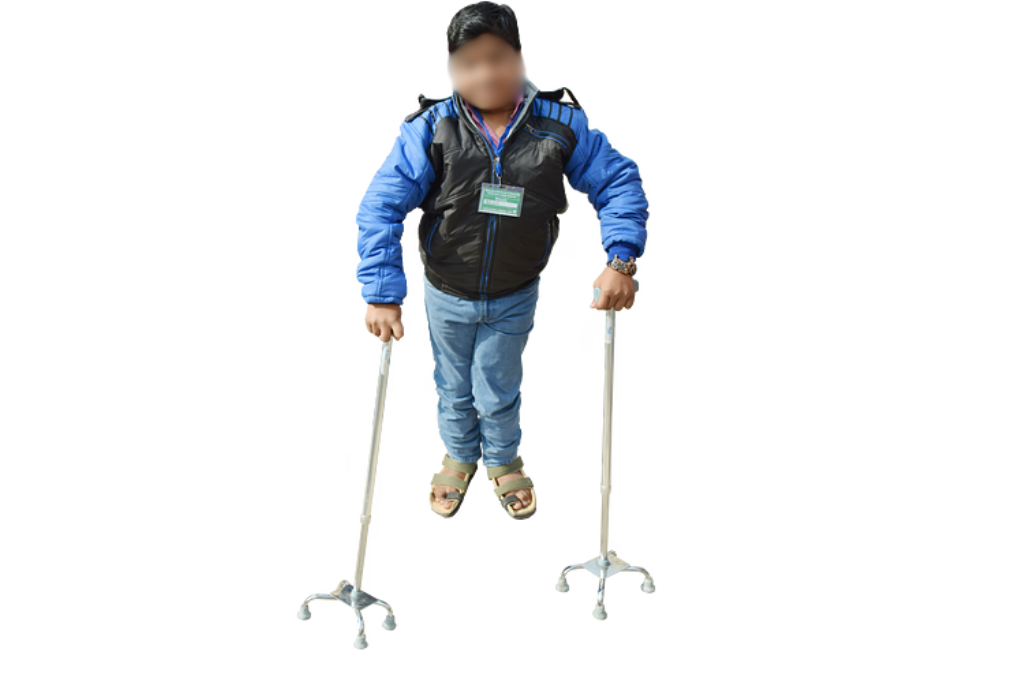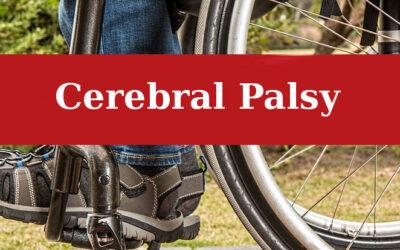Assisted Walking Devices: Walkers, Canes, and Standers
Cerebral Palsy (CP) is a complex condition with a wide range of motor impairments. Before selecting assisted walking devices, it is crucial to assess each child’s specific needs and capabilities. CP can affect muscle strength, coordination, balance, and range of motion differently in each individual. A thorough evaluation by healthcare professionals, such as pediatricians, physical therapists, and occupational therapists, is essential to determine the most suitable device for a child’s unique condition.
Walker for Children with CP
Walkers are assisted walking devices designed to provide support and stability during walking. They typically consist of a frame with handgrips and move with assistance. The primary benefits of walkers for children with CP include improved balance, increased independence in mobility, and reduced risk of falling issues. Walkers are particularly beneficial for children with CP who may have difficulty maintaining balance or bearing weight on their legs without support.
Two-Wheeled Walker for Children with CP
Design and Function:
Two-wheeled walkers are similar to standard walkers but have two front wheels and two rear rubber tips. They provide stability and support for children with CP while allowing for smoother movement.
Benefits:
Two-wheeled walkers offer improved balance and mobility, making them suitable for children who need assistance in walking but also want to maintain a degree of independence in maneuvering.
Customization:
Like other walkers, two-wheeled walkers should be customized to the child’s height and specific needs. Proper fitting is essential to ensure safety and support.
Four-wheeled walker (Rollator) for Children with CP
Design and Function: Four-wheeled walkers, commonly known as rollators, are equipped with four wheels and hand brakes. They provide support for walking, but the child needs to use it as a posterior walker for more benefit.
Benefits:
Rollators offer improved balance and mobility. The trunk will be much straighter in a rollator than in a walker. They are suitable for children with CP who may bend forward during extended periods of walking.
Usage Considerations:
While rollators can be helpful, it’s essential to ensure children have the strength and coordination to use the hand brakes safely. Parents and caregivers should receive training on the proper use of rollators.
Choosing Between Walker Types:
The choice between a standard walker, two-wheeled walker, or rollator (four-wheeled walker) should be based on the child’s specific needs and capabilities and recommendations from healthcare professionals.
Factors to consider include:
- The child’s level of mobility and balance.
- The need for additional support during walking.
- Whether the child requires the option to sit and rest during walks.
- The child’s strength and coordination to use the chosen device safely.
- Customization and proper fitting for optimal support and comfort.
Training and Education for Walker Types
Regardless of the walker type chosen, parents, caregivers, and children need to receive proper training on how to use the device safely and effectively.
Training should cover
- Maintaining correct posture while using the walker.
- Utilizing any additional features or brakes.
- Safety measures during mobility and rest periods.
- Maintenance of walker.
Monitoring and Adjustments
Regular monitoring of the child’s progress and the condition of the walker is crucial. Adjustments to the walker, such as changes in height or wheel maintenance, may be necessary over time to ensure continued safety and effectiveness. Incorporating these points on two-wheeled and four-wheeled walkers (rollators) provides a comprehensive overview of the various assisted walking devices available to children with Cerebral Palsy. The choice of walker type should be made based on the child’s specific needs and in consultation with healthcare professionals, and the proper fitting, customization, training, and ongoing monitoring remain essential considerations for all walker types.
Canes for Children with CP
- Canes are assisted walking devices that provide additional stability and support during walking. They are usually single-point or quad canes (with four points for added stability).
- Canes benefit cerebral palsy in children by enhancing balance, confidence, and independence during walking.
- They are often recommended for children with mild to moderate mobility impairments who require less support than a walker provides.
Types of Canes
There are two primary types of canes for children with CP:
Single-Point Canes:
These canes have a single tip and are suitable for children who need minimal walking support.
Quad Canes:
Quad canes have four tips and offer excellent stability and support. They are ideal for children who require more assistance with balance. As with walkers, the choice of cane type should be made in consultation with healthcare professionals based on the child’s specific needs.
Standers for Children with CP
Standers enable children with CP to assume an upright standing position. They come in various types, including supine standers (lying down), prone standers (facing forward), and vertical standers (upright position). Standers offer several benefits, including improved bone health, circulation, muscle strength, and digestion. They can also help prevent complications related to prolonged sitting.
Types of Standers
Different types of stander cater to various needs:
Supine Standers:
These allow children to lie down while providing support for the entire body. This stander is prescribed to children who have reasonable trunk control.
Prone Standers:
Prone standers enable children to face forward while standing and offer support for the trunk and upper body. This stander is given to children with poor trunk control.
Vertical Standers:
These standers position children in an upright, weight-bearing stance, promoting overall physical fitness. The choice of standard depends on the child’s therapeutic goals, age, and individual needs. Healthcare professionals can help determine the most suitable option.
Benefits of Assisted Walking Devices
Enhancing Mobility:
Assisted walking devices significantly improve a child’s mobility. They enable children to move independently and explore their environment, essential for physical and cognitive development.
Improved Independence:
Assisted walking devices promote independence by allowing children to perform activities such as standing and walking with reduced assistance. Freedom contributes to improved self-esteem and confidence.
Enhanced Bone Health:
Standers promote weight-bearing on bones, reducing the risk of osteoporosis and other bone-related complications. However, literature has not proven this benefit in the long term.
Improved Circulation:
Standers facilitate better blood circulation, reducing the risk of complications associated with prolonged sitting, such as pressure sores.
Strengthening Muscles:
Assisted walking devices help to strengthen muscles and improve posture, supporting overall physical development.
Consultation with Healthcare Professionals
Before introducing assisted walking devices, parents and caregivers should consult with healthcare professionals specializing in treating children with CP. These professionals can conduct a thorough assessment, recommend the most suitable machine, and guide its proper usage.
Conclusion
Walkers, canes, and standers are valuable assisted walking devices that significantly enhance mobility, independence, and overall quality of life for children with Cerebral Palsy. Assisted walking devices should be selected based on each child’s specific needs, with input from healthcare professionals.




